In the course of my tour, I had to find my way around several cities, and (as a budget-conscious writer) that usually meant acquainting myself with the transit system. Toronto, New York and Chicago all have good systems, but each has its own idiosyncrasies and takes some understanding to navigate.
Toronto’s subway is one of the simplest in the world, having only two lines. Of course, it’s also the one I’m used to. My expectation is that other subway systems will make as much sense, be as easy to navigate as the TTC. But they aren’t.
While Toronto has one of the least complicated subways to navigate, New York’s MTA has to be one of the most complex. Over a dozen numbered and lettered trains take over half-a-dozen different coloured lines all over metropolitan New York. And perhaps the most difficult part of trying to understand this system is that you can’t necessarily transfer from one line to another where you think you can. Just because a train comes through a station, doesn’t necessarily mean it stops there and doesn’t mean there’s any way to transfer to it. Returning from Brooklyn on the brown line, I found I had to go a couple of stops south on the green line to transfer to a northbound green line train to get back to my hotel. I felt a little embarrassed, that I must be missing some obvious connection, until I noticed other people doing the same thing.
Chicago’s CTA has six coloured train lines that all intersect in the Loop (four elevated, two subway), but again, transfers between lines only occur at certain stations. As with the MTA, there’s the difficulty of different lines having stops with the same name. It never struck me as a potential problem in Manhattan, probably because the streets and avenues are generally numbered, so it’s easy to figure out where you are. In Chicago, where the streets are named, they don’t give you that clue. It wouldn’t be enough to know you had to get off at the Harlem stop; you’d also have to know the line. In Chicago, there’re three Harlem stops, two of them on the blue line, one almost four miles south of the other.
Adding to their already inherent complexities and character, it was kind of mysterious fun to discover that all three systems have abandoned stations and disused tunnels. Although I may have the spirit of an urban adventurer, I’m more of an armchair aficionado and admit to some hesitation about exploring any of these firsthand.
The MTA system has a vast network of abandoned subterranean transit tunnels, due in part to its age and the number of companies originally operating. The Abandoned Stations site lists ten stations, six levels and nine platforms which have been closed. This site is meticulously updated with current and historic text, photos, timetables and maps detailing each closed station or section.
Forty feet beneath the streets of Chicago lies a completely abandoned freight rail system; sixty-two miles of tunnels about six feet wide and seven feet high, equipped with two-foot gauge track. Originally dug to carry telephone and telegraph wires, the tunnels were expanded and operated from 1909-1959 transporting goods, food, coal and packages to and from stores, warehouses, offices, factories, railroads and post offices. The system ran 149 four-wheeled locomotives and had +3,000 pony cars – sort of an industrial version of something you’d find in a children’s amusement park. The Chicago Tunnel Company Railroad site gives a detailed history as well as historic photos.
Despite its relative youth, even the Toronto subway has two abandoned stations (Lower Bay and Lower Queen), as well as a few rarely used tunnels. Toronto-based urban adventurer Ninjalicious has a fascinating article on exploring TTC tunnels in Infiltration.
The MTA operates 8,231 rail and subway cars (along with 4,864 buses) and charges $1.50 (US) per ride, payable by MetroCard. In my limited experience, the system is very reliable, although one must take a Zen approach to the timetables. Although some lines still use older trains which have been re-painted countless times to cover graffiti, the well-used green line number 6 has the most modern trains I’ve ever ridden. They’re sleek silver bullets, with roomy open interiors, and recordings that announce train information at every station. LED signs at both the front and rear of the train repeat the information and maps above the seats have lights that indicate the next stop and direction of travel. It all makes it easier for the uninitiated to get where they’re going without mishap and I didn’t get lost once! (Those of you who know me well can now get off the floor.)
The MTA platforms reminded me of Roman baths, with clean white tile and porcelain crests emblazoned with the station name. However, the stations tend to have low ceilings, great depth (to accommodate four train lines) and a rather dark, cave-like atmosphere which on occasion made me a bit nervous.
The CTA has 1,100 rapid transit cars (and 1,900 buses) and operates the second largest transit system in the United States, charging $1.50 per ride using a Transit Card. The system is comprised mostly of elevated trains that run about level with the third storey of most of the buildings they snake through. Els certainly have some advantages over subways: there are no mice or rats to contend with (only pigeons), riders are never surprised by the weather and they can enjoy the architecture enroute. I also imagine passengers are occasionally surprised by a display through a carelessly opened bedroom blind.
The TTC operates 672 subway cars (along with 1,468 buses and 248 streetcars) and charges $2.25 (CDN) per ride (a little less if you buy tokens or tickets). It has an annoying tendency to break down when the pressure’s on and it’s most needed (rush hour, inclement weather). However, I’ve also taken a lot more rides on it so I’ve had more opportunity to see it at its worst. Generally speaking it works and works well and is still a lot cheaper and more environmentally friendly than owning a car.
©Catherine Jenkins 2003

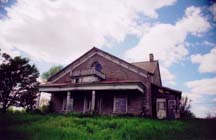 Why would I consider such an odd juxtaposition? Because those were the two places my reading tour took me in June (as well as home in Toronto, of course).
Why would I consider such an odd juxtaposition? Because those were the two places my reading tour took me in June (as well as home in Toronto, of course). its second-storey porch. Among Picton’s other buildings of note is the Regent Theatre, housed in a building also dating to the 1830s. After renovations, it reopened in 1922 as an Edwardian-style opera house with 900 seats. It still operates as a venue for both live theatre and movies, although the number of seats has (fortunately) been halved.
its second-storey porch. Among Picton’s other buildings of note is the Regent Theatre, housed in a building also dating to the 1830s. After renovations, it reopened in 1922 as an Edwardian-style opera house with 900 seats. It still operates as a venue for both live theatre and movies, although the number of seats has (fortunately) been halved. Less than a week later, I was on the (mostly empty) train heading to New York. The train runs down the Hudson River valley, crossing and uncrossing the river and running along its bank with the wild white and purple phlox. After sunset, after the long dark ride through the under-river tunnel, I emerged suddenly somehow in the city.
Less than a week later, I was on the (mostly empty) train heading to New York. The train runs down the Hudson River valley, crossing and uncrossing the river and running along its bank with the wild white and purple phlox. After sunset, after the long dark ride through the under-river tunnel, I emerged suddenly somehow in the city.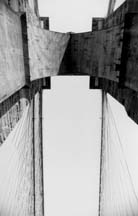 stomach feeling. Makeshift memorials have sprung up in sometimes unexpected places all over lower Manhattan. Three subway stops remain closed and a surprisingly large number of blocks are still cordoned off nine months later. Even being right there, I found it difficult to comprehend the magnitude of this event; not much wonder New Yorkers are still struggling with it. I stopped for a rest by the Hudson and noticed I was the only one bothering to look up when the helicopters trailed by every few minutes, and wondered if I was the only one noticing, even now, the occasional waft of burnt in the air.
stomach feeling. Makeshift memorials have sprung up in sometimes unexpected places all over lower Manhattan. Three subway stops remain closed and a surprisingly large number of blocks are still cordoned off nine months later. Even being right there, I found it difficult to comprehend the magnitude of this event; not much wonder New Yorkers are still struggling with it. I stopped for a rest by the Hudson and noticed I was the only one bothering to look up when the helicopters trailed by every few minutes, and wondered if I was the only one noticing, even now, the occasional waft of burnt in the air.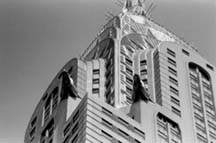 The next day I treated myself to a browse through the Metropolitan Museum of Art. I walked through the Modern and Annenberg Impressionist collections, an overwhelming assortment of Degas, Cézanne, Sisley, Caillebotte, Chagall, Monet, Manet, Van Gogh, Seurat, Picasso, Lautrec and a few others. I noticed not all the Van Gogh’s had been hung in the same room; if they were, they’d probably spontaneously ignite from the sheer intensity of energy and vibrancy of colour. They hadn’t mounted all the Monet’s in the same room either; his work glows in such a fluid way that viewers would be lulled into a complete state of calm and they’d never leave.
The next day I treated myself to a browse through the Metropolitan Museum of Art. I walked through the Modern and Annenberg Impressionist collections, an overwhelming assortment of Degas, Cézanne, Sisley, Caillebotte, Chagall, Monet, Manet, Van Gogh, Seurat, Picasso, Lautrec and a few others. I noticed not all the Van Gogh’s had been hung in the same room; if they were, they’d probably spontaneously ignite from the sheer intensity of energy and vibrancy of colour. They hadn’t mounted all the Monet’s in the same room either; his work glows in such a fluid way that viewers would be lulled into a complete state of calm and they’d never leave.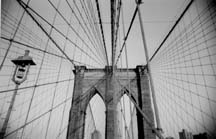 and The Poets House. Went to the Upper West Side for brunch and a look around, wandered the Village and Central Park some more. With Marianne Faithful hoarse in my ear, I took a walk around Times Square at night. This city just doesn’t stop. The New York Central Library and the Met alone would take two lifetimes to explore. Manhattan has done a lot of things right and it was a real joy to be there.
and The Poets House. Went to the Upper West Side for brunch and a look around, wandered the Village and Central Park some more. With Marianne Faithful hoarse in my ear, I took a walk around Times Square at night. This city just doesn’t stop. The New York Central Library and the Met alone would take two lifetimes to explore. Manhattan has done a lot of things right and it was a real joy to be there.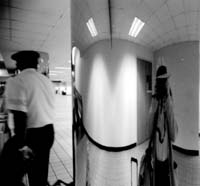 maple syrup (which is sealed until the next time I make waffles). I think the store of comfort food has helped make up for the mild exhaustion.
maple syrup (which is sealed until the next time I make waffles). I think the store of comfort food has helped make up for the mild exhaustion.